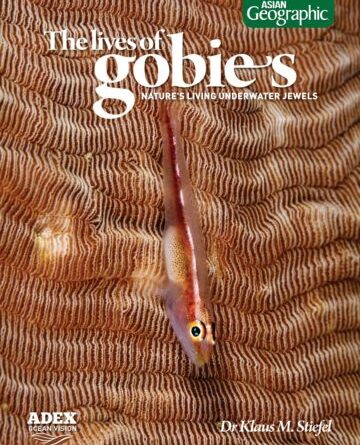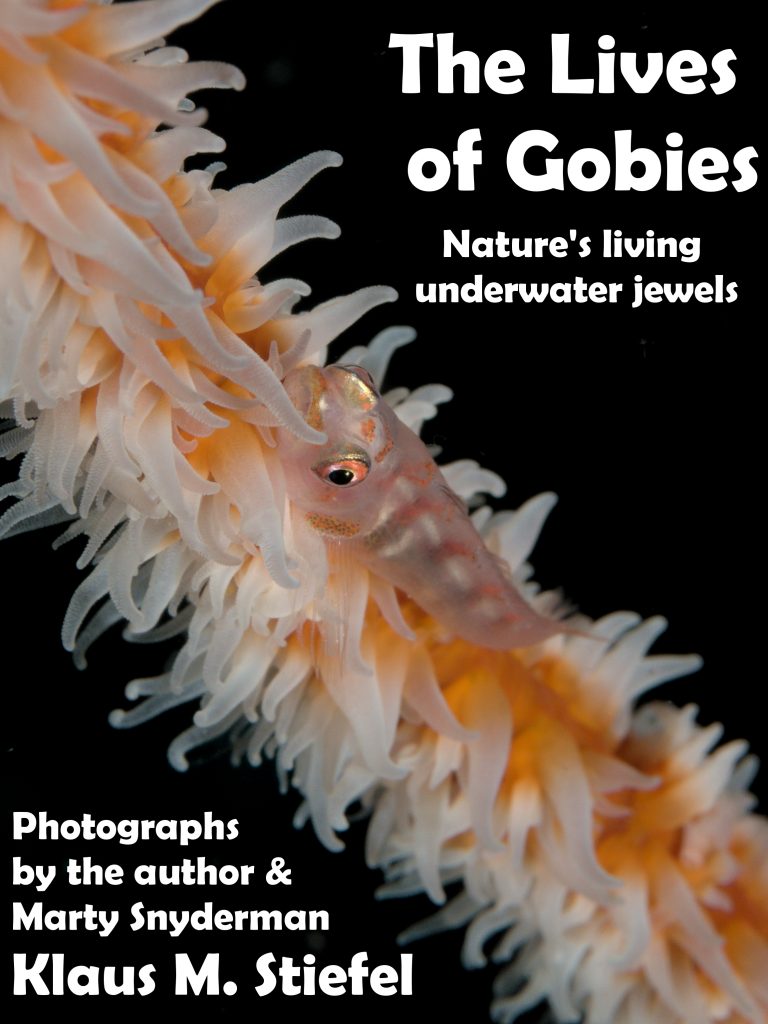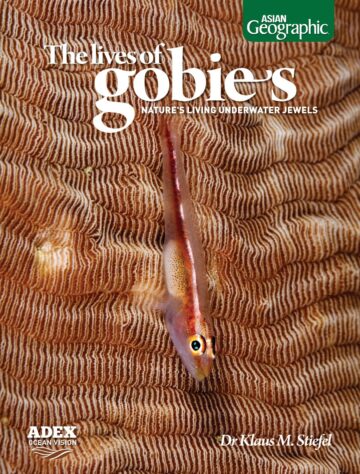
The Lives of Gobies
The Lives of Gobies On Pre-Sale Now! Popular Science about one of the most awesome family of fishes:
The Lives of Gobies by Klaus M. Stiefel, with photographs by the author and by Marty Snyderman.
The Lives of Gobies – A popular science Book for Divers, Aquarium Hobbyists and Other Fish Lovers. The book explains the fascinating biology of these very pretty, extremely diverse small fishes. It’s scientifically solid without obfuscating the insights of ichthyology with fancy jargon like “ichthyology” (fish science). It’s readable and fun, while at the same time educational and informative. After reading this book you will never see those tiny gobies in the same light again when you go for a scuba dive or encounter them in the aquarium store.
I – the author – am a biologist, underwater photographer and popular science writer currently based in the Philippines.
TABLE OF CONTENTS
Introduction
What is a goby? Where do they live? What makes them such fascinating fishes?
Goby Biodiversity
Gobies are the most numerous family of marine fishes. How did so many species evolve? This chapter also looks at the geographic ranges of goby species and how they came about.
Very Small and Short-Lived Fishes
Some of the smallest vertebrates (mammals, birds, reptiles, amphibians and fish) are gobies, as are some of the shortest-lived vertebrates. This chapter discusses the extreme ecological niches of these small, short-lived fishes, contrasting them with long-lived sharks.

Gobies as Squatters
Many species of gobies live on other, larger marine organisms such as corals, sponges and sea squirts. The colors and patterns on the tiny fishes astonishingly match their hosts. We will discuss these examples of co-evolution.
More than one hundred species of gobies share burrows with shrimps. In this symbiosis, the shrimp digs the burrow, while the goby acts as a watchman. This fascinating example of mutually beneficial cooperation between two species – the main scientific interest of the author – is the topic of this chapter.
Freshwater Gobies
The tropics are home to a wide variety of freshwater bodies of the tropics from small mountain creeks to rivers and large lakes. Gobies have settled these freshwater ecosystems as well, and the fractured nature of the geography of island nations like Indonesia and the Philippines has given rise to many endemic species (species living only in a very narrow geographic range). This is another fascinating topic for the biology enthusiast, and more photos of beautiful tiny fishes to look at!
Amphibious Gobies
Gobies do not only live in the ocean and in freshwater ecosystems, but they have colonized land as well. Mudskippers are amphibious gobies living among the mangroves. This chapter illustrates the lives of these very unusual fishes and explains their special adaptations to life on land.
Gobies in the Caribbean
The Caribbean, the tropical western Atlantic Ocean, was cut off from the Indo-Pacific by the closure of the Isthmus of Panama about 2.8 million years ago. This isolation has allowed the marine animals of the region, including its gobies, to evolve independently, giving rise to interesting species like shrimp gobies to be weakly tied to their shrimp (see Chapter 5) and gobies acting as cleaners of other fishes from parasites.
Photographing and Filming Gobies
It is not easy to approach small, shy fishes with an underwater camera setup many times their own size. This chapter will give you some practical tips for getting good goby shots yourself.
